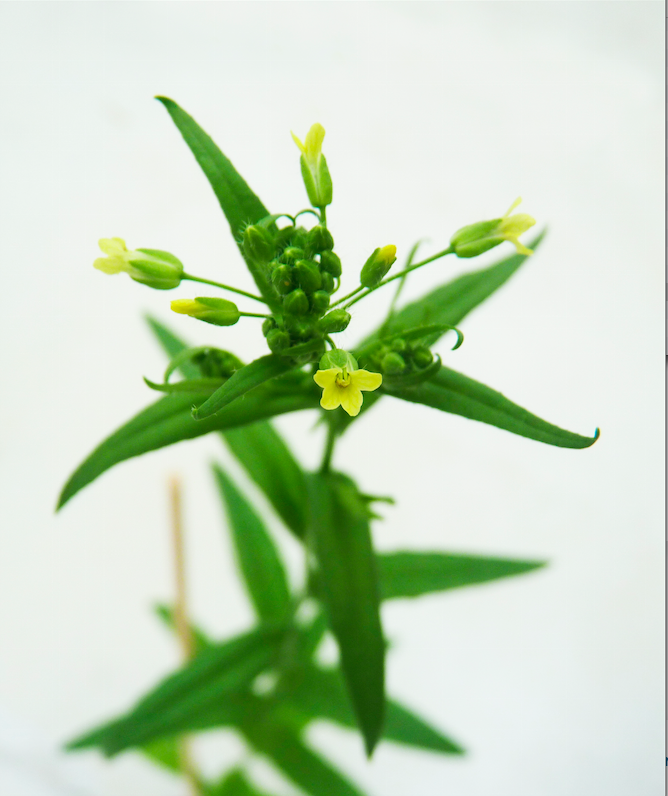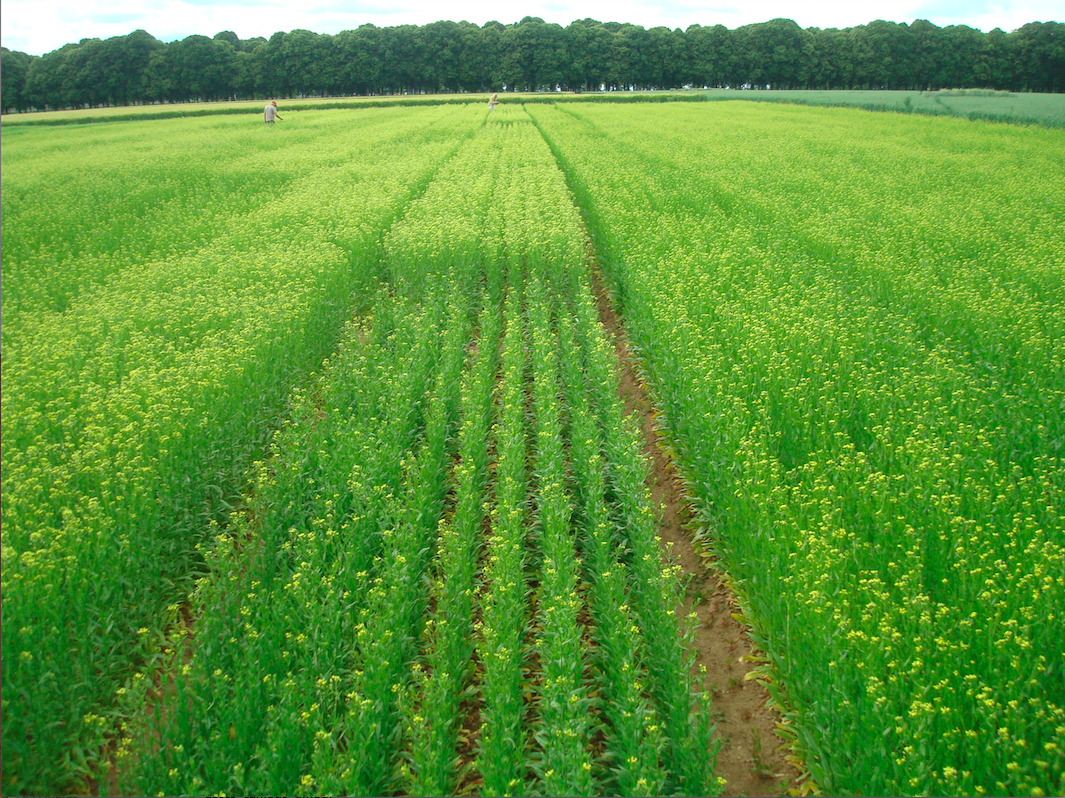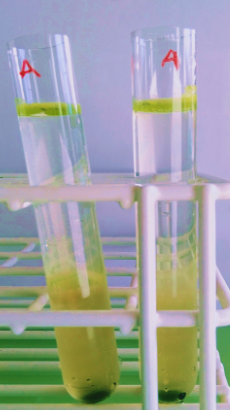Plant lipid droplets in post-stress recovery (ANR RecovOil)
(Contact S. D'andréa)
Although global climate change is significantly affecting agricultural crop yields, our understanding of the cellular mechanisms involved in plant tolerance to environmental stress is still limited. The transient accumulation of triacylglycerols (TAGs) in lipid droplets (LDs) is a cellular mechanism considered essential for stress adaptation. In plants, a wide range of environmental stresses, including heat and nitrogen deficiency, induce TAG accumulation and LD proliferation. But by which pathways - lipolysis or lipophagy - are these lipids degraded, and how do they contribute to membrane and energy homeostasis? Do distinct populations of LDs coexist within cells, with specific functions associated with energy supply or remodeling of membranes and organelles?
The RecovOil project proposes a transdisciplinary experimental program to address these questions and elucidate LD functions during post-stress recovery. In particular, the project aims at characterizing LD remobilization mechanisms and their importance in plant stress tolerance, by determining whether these mechanisms are specific to stress type (heat vs. nitrogen deficiency) and development stage (young adult plants vs. young seedlings)? This project will thus contribute to a better understanding of how plants adapt to environmental stresses, a crucial question in the current context of global climate change.
Collaboration Membrane Biogenesis Laboratory (LBM)
Camelina, an ancient oilseed crop and a model for translational research (UNTWIST european project)
(Contact J. D. Faure)
The DECLIC group has developed several research projects in translational research to develop a new model of oilseed cultivation in the context of a more sustainable agriculture. Camelina sativa is an ancient European oilseed species with an oil profile rich in polyunsaturated fatty acids that can be grown under a wide range of
 conditions due to its high tolerance to abiotic and biotic stresses. Current projects focus on modifying lipid accumulation in oil, shortening flowering time and resistance to water stress.
conditions due to its high tolerance to abiotic and biotic stresses. Current projects focus on modifying lipid accumulation in oil, shortening flowering time and resistance to water stress.Designing new oil profiles in Camelina
The impact of polyunsaturated fatty acid reduction on plant development and stress response is of importance in the frame of climatic change. Synthetic biology approaches are also underway to channel specific fatty acids into the oil. These are innovative strategies combining CRISPR multiplex metabolism enhancement and synthetic enzyme assembly. New combinations of enzymes and mutants are now being tested to obtain a wide range of oil profiles. The main objective is to produce camelina plants with fatty acid profiles for new uses with adapted lipids.
Designing early flowering Camelina plants. The short life cycle of camelina opens up particularly interesting possibilities for double cropping that would have positive agro-ecological benefits: e.g. reducing soil erosion; increasing agrobiodiversity. A combination of traditional breeding and CRISPR mutagenesis approaches has identified several new early flowering camelina lines are being evaluated under various growing conditions (Bellec et al. 2022).
Understanding water stress resistance in camelina. This project is conducted in the framework of a European consortium UNTWIST which aims to characterize the mechanisms of drought tolerance using genetic diversity observed in camelina and multi-omics approaches in controlled and field conditions. The project aims to develop predictive models and biomarkers associated with this tolerance. Our team will also contribute to increase this genetic diversity by developing new recombinant lines that will allow to validate the models.

Fate of omega-3 and 6 lipids of nutritional interest from camelina in fermentation processes (CALIFE AgroParisTech federating project)
(contact M. Froissard)
The explosion in societal demand for a healthier, more sustainable diet, in particular with more plant-based ingredients, is forcing us to diversify our offer and develop new products. Innovation in the field of alternatives to dairy products must offer solutions with optimal health, nutritional and organoleptic qualities. It must also take into account the sustainability of processing, production chains and consumers. Camelina has recently been adopted by local farmers on the Plateau de Saclay and Plaine de Versailles as part of their technical itineraries, thanks to its role in the agroecological transition and the richness of its seeds in omega-3 and omega-6 fatty acids, which are of nutritional interest. But camelina lacks outlets for its production.
Fermentation is a very old processing method. It's a low-energy process that stabilizes the product, thereby extending its shelf life. Fermentation also enhances the sensory qualities of fermented vegetable matter. Camelina has compounds that give it notes of kohlrabi, often perceived negatively by consumers. Fermentation of camelina is therefore an innovative approach that could make it possible to diversify dairy substitutes and modulate the aromatic notes of cabbage.
In collaboration with the CoMiAl team at UMR SayFood, we aim to develop and characterize the nutritional and sensory properties of fermented products such as “yoghurt” or “fresh cheese” using 100% vegetable matrices obtained from camelina seeds.
Lipid droplet engineering
(Contact M. Froissard)
Over the last 20 years, research on lipid droplets (LD) has been booming. Indeed, the dysfunction of these cellular organelles is associated with diseases such as diabetes, myopathies, hepatic steatosis or viral infections. Moreover, the lipids contained in LDs are important molecules for food (vegetable oils), green chemistry (biodiesel) and cosmetics (soaps, creams containing vegetable oils).

These LDs, mainly composed of lipids, also contain proteins on their surface. Some key points of the LD biogenesis process remain poorly understood including (1) the mechanisms of geolocalization and assembly of LD formation sites within the ER and (2) the structural changes and protein domains allowing the passage of proteins from the ER membrane bilayer to the GL phospholipid monolayer.
The team produces functionalized lipid droplets (LDs) in yeast, tobacco leaves and camelina seeds for recombinant protein production and transcutaneous or oral delivery. The association of recombinant proteins with the LD surface enables purification of the products of interest by aqueous extraction and flotation, which is more respectful of the environment and the products of interest than some conventional protein production technologies using denaturing products, detergents, solvents or a heating step. This technology requires good association of proteins with LDs in vivo. For this reason, in-depth knowledge and mastery of the cellular mechanisms involved in addressing and associating protein with LD surfaces is required.
In progress:
Integrative study of viral capsid/lipid droplet interaction in heterologous systems. Thesis D. Rapoport, co-directed by INRAE/SOLEIL. Collaboration Virologie et Immunologie Moléculaire (VIM, INRAE)

Leader:
Marine Froissard